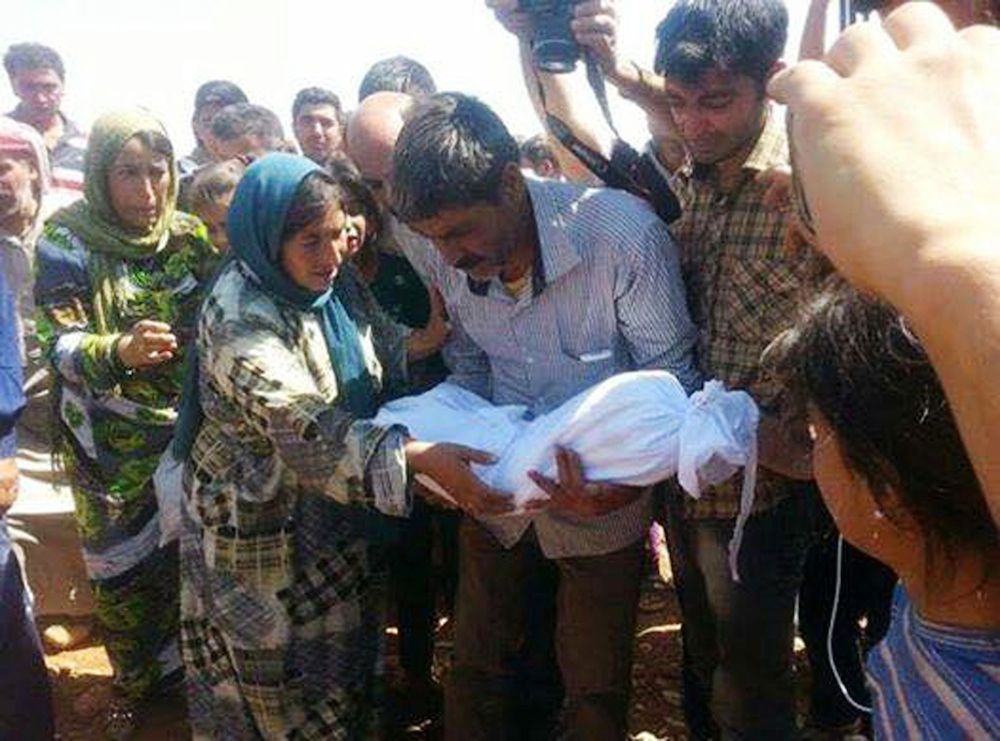When Mary Panzer saw the photos that have at least momentarily focused world attention on a long-term tragedy, she wondered about what the images didn’t make clear.
She wondered about the partial story they told.
Panzer, a New York photography expert, curator and historian, was troubled “that we don’t see pictures of the mothers. This makes it seem as if their parents have abandoned them, deliberately put them in danger, which is partly true. But why did they do it?”
“To escape unendurable conditions? Where are they coming from? What did they leave? Why have they no resources better than a boat that’s sure to sink?” asked Panzer, the former curator of photographs at the National Portrait Gallery in Washington, D.C.
But the photos also were consistent with a long history of gripping photos of children, she notes, especially as they attract attention to atrocities.
She immediately thought of these: Pulitzer Prize winners like Nick Ut’s image of the napalmed girl running naked down the road in Vietnam (1972); Kevin Carter’s picture of a naked child with a vulture nearby — the famine in Sudan (1994); the blue face of a child in the rubble after Bhopal, India gas tragedy by Pablo Bartholomew (1984); and Frank Fournier’s little boy trapped in water after a volcano in Colombia (1985).
Indeed, Aidan Sullivan, the vice president/photo assignments for Getty Images, told me, “I don’t think there has been a picture that has stirred the public to such an extent since Nick Ut’s picture of the young girl running down the road screaming in pain from napalm that was burning her skin or the plane hitting the Twin Towers.”

South Vietnamese forces follow after terrified children, including 9-year-old Kim Phuc, center, as they run down Route 1 near Trang Bang after an aerial napalm attack on suspected Viet Cong hiding places on June 8, 1972. A South Vietnamese plane accidentally dropped its flaming napalm on South Vietnamese troops and civilians. The terrified girl had ripped off her burning clothes while fleeing. The children from left to right are: Phan Thanh Tam, younger brother of Kim Phuc, who lost an eye, Phan Thanh Phouc, youngest brother of Kim Phuc, Kim Phuc, and Kim’s cousins Ho Van Bon, and Ho Thi Ting. Behind them are soldiers of the Vietnam Army 25th Division. (AP Photo/Nick Ut)
The pictures that Panzer cites have become better known than the crises they document, although it’s curious why are we so attracted to some, not to many others.
Liz Sly, a Washington Post Beirut-based correspondent, has tweeted photos of dead Syrian kids many times and had no responses, she told me. This time, she says, she got lots of responses, some very negative.
So why do we remember the ones we do?
“Pictures do not work on our brains according to logic,” Panzer said. “They hit lower and deeper. Emotion is not reasonable, and in fact, there is undeniable pleasure in being able to submit to un-reason, to feel something strong and true after all the titillation and trash that crosses our visual field every hour of the day.”
She notes the key elements of the beach photos: The little boy alone, the little sneakers and shorts, the primary red and blue colors associated with kids, and the little body cradled in the arms of a tall strong man. We might think at first the boy is sleeping—then we think something else.
The images exploit our collective memory and associations. Where were the parents? Who and what might possibly hurt such a powerless thing? What evil forces lurk?
We don’t really think about Syria or Turkey and the obvious policy issues they inspire related to migrants and refugees, but just generally about parents, children, safety and danger.
“As long as our minds are filled with such strong emotion, we lose the ability to think critically about the situation that this tragic picture represents,” Panzer told me. “When we turn from the picture at last, in part we are already exhausted, our attention depleted.”
So we remember a picture like these longer than the actual details of the precipitating event, or far longer than our interest in a subject like Syria and the millions who have already been displaced.
With a touch of cynicism, Panzer said this reality “is certainly pleasing to photojournalists who compete to win prizes, and also compete for the approving eye of posterity.”
But if the event fades while the picture survives, who wins?
In part, there’s the photojournalist, whose name is tied to the picture. And, these days, there’s the publisher, or whoever is in charge of getting traffic to a website.
Ultimately, it’s the picture, not the actual situation that can prove paramount.
Panzer gave me examples of photographers whom she feels have exploited subjects and individuals “to get real estate in the Western press.” There’s some cynicism at play on her part, she concedes, but she also admits that, sometimes, something vaguely valuable can result.
When the victim of the tragedy is a child, there is a greater chance that public outcry will have some constructive effect.
“Maybe the UN will finally classify these people as refugees so that they can apply for visas?” she said.
Or, as Sullivan put it to me Friday, if something is actually done about the refugee and migrant crisis, the image of the little boy and “the unbearable grief of his father and family will perhaps become an iconic and historic reminder of a tragic situation that was in part resolved because of one image.”
Related: Tragic images of children captured by photojournalists over time
Correction: An earlier version of this story misspelled Colombia. It has been corrected.







